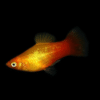To provide the best experiences, we use technologies like cookies to store and/or access device information. Consenting to these technologies will allow us to process data such as browsing behaviour or unique IDs on this site. Not consenting or withdrawing consent, may adversely affect certain features and functions.
The technical storage or access is strictly necessary for the legitimate purpose of enabling the use of a specific service explicitly requested by the subscriber or user, or for the sole purpose of carrying out the transmission of a communication over an electronic communications network.
The technical storage or access is necessary for the legitimate purpose of storing preferences that are not requested by the subscriber or user.
The technical storage or access that is used exclusively for statistical purposes.
The technical storage or access that is used exclusively for anonymous statistical purposes. Without a subpoena, voluntary compliance on the part of your Internet Service Provider, or additional records from a third party, information stored or retrieved for this purpose alone cannot usually be used to identify you.
The technical storage or access is required to create user profiles to send advertising, or to track the user on a website or across several websites for similar marketing purposes.
















Emily Carter (verified owner) –
I recently added 4 Gold Wagtail Platies (Xiphophorus maculatus) to my community tank, and I couldn’t be happier! These little guys are not only stunning with their bright colors and graceful movements, but they also have such lively personalities. After a week in their new home, they quickly adapted and started interacting with each other and the other tank inhabitants. I’ve kept various pet fish over the years, but these platies have truly stolen my heart.
The quality of these platies was evident right from the start; they arrived healthy and active, showing no signs of stress during shipping. Compared to other livebearers I’ve had, their colors are much more vivid, and the gentle nature makes them a joy to watch. One minor issue was that one platy was a bit shy at first, but after a few days, it found its confidence.
I highly recommend these fish for both beginner and experienced aquarists. They thrive in a community tank and are perfect for anyone looking to add a splash of color and personality. If you’re considering adding platies to your aquarium, don’t hesitate—these Gold Wagtails are a wonderful choice!
Emily Carter (verified owner) –
I recently added four Gold Wagtail Platies to my tropical freshwater tank, and I couldn’t be happier! These little guys have such vibrant colors that really stand out against my aquarium plants, creating a stunning visual effect. I’ve had them for about two weeks now, and they’ve settled in beautifully. Their peaceful nature makes them perfect companions for my guppies and tetras.
I appreciate how active they are; it’s delightful to watch them swim around and interact with each other. Compared to other platies I’ve kept before, these Gold Wagtails seem much more social and outgoing. One small concern was a brief initial period where they hid a bit, but it only lasted a couple of days before they were darting around the tank.
As a caring fish parent, I ensure my tank is well-planted and spacious, which helps them thrive. If you’re looking for a lively addition to your aquarium, these platies are a great choice! They’re ideal for beginners and seasoned aquarists alike. I highly recommend them for anyone wanting colorful, peaceful fish in their tanks!